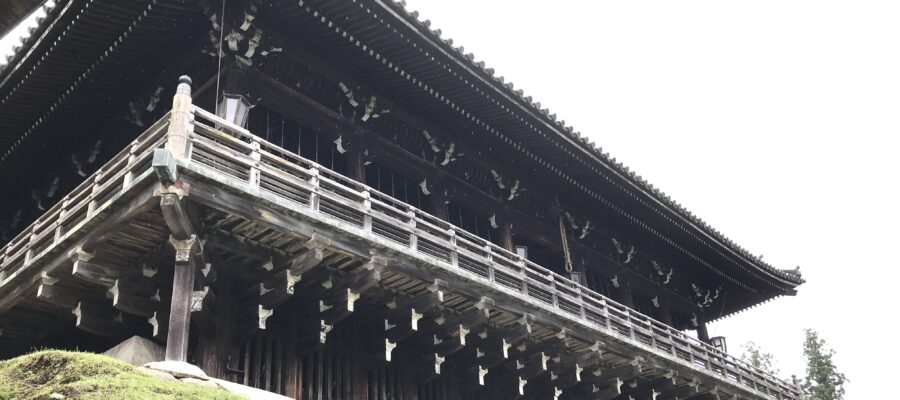東大寺に来て、大仏だけを見て帰ったのでは非常にもったいないです。もちろん、南大門の仁王像は見たという人がほとんだと思いますが、もう一歩、奥に進んで見ていただきたいものが沢山あります。と言う私も、普段は時間が足りないので、大仏殿の案内だけで済ませています。
法華堂と二月堂
最初は法華堂です。三月堂とも呼ばれています。不空羂索観音を中心に、奈良時代の乾漆造の像と塑造の像が立ち並んでいます。像は大きいので、これだけ並ぶと迫力がすごく、さらに、金剛力士像や四天王が睨みを聞かせているので、圧力を感じます。撮影禁止なので、実際に足を運んで、その迫力を感じてみてください。
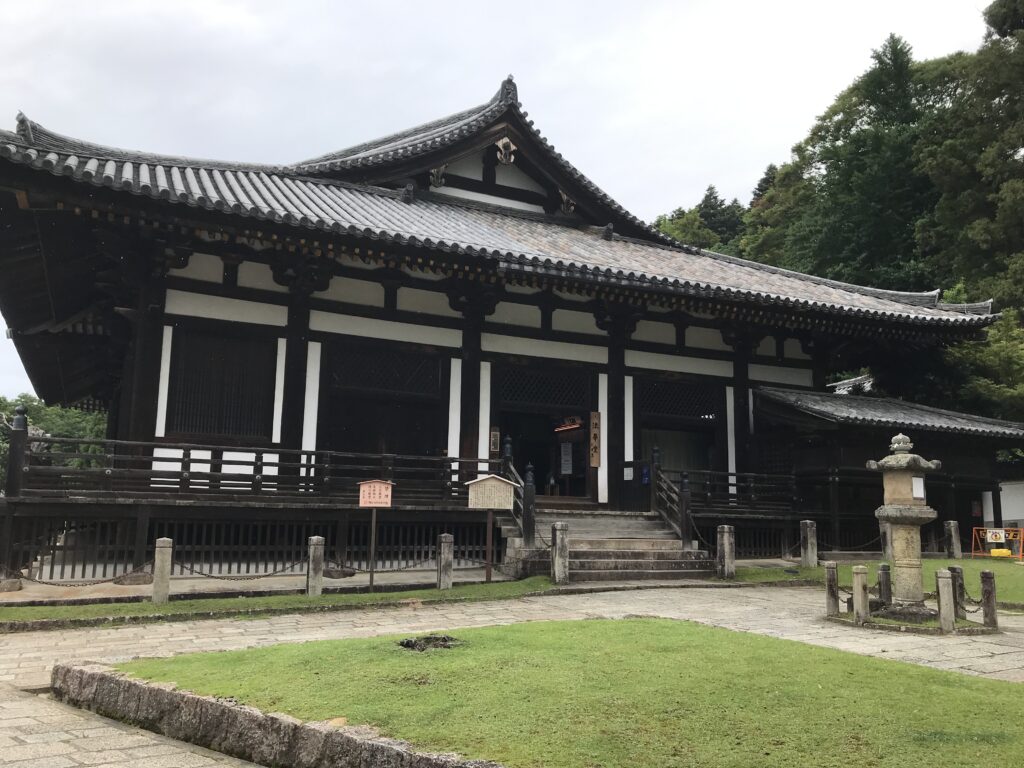
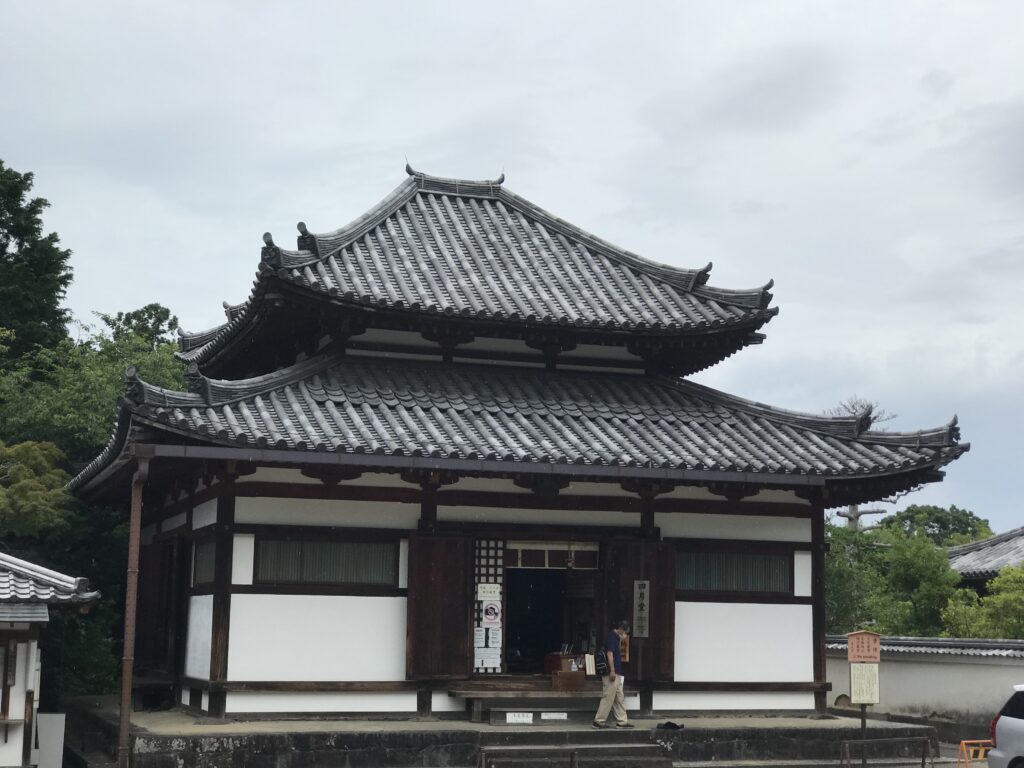
法華堂の並んで建っているのが、二月堂です。修二会の際に、いわゆるお松明が走るお堂として、お馴染みの堂宇です。普段、あまり上ることはありませんが、一度は、お松明がとおるところをお通りください。ここからは奈良市街が一望できますので、海外の方をお連れしても喜んでいただけると思います。
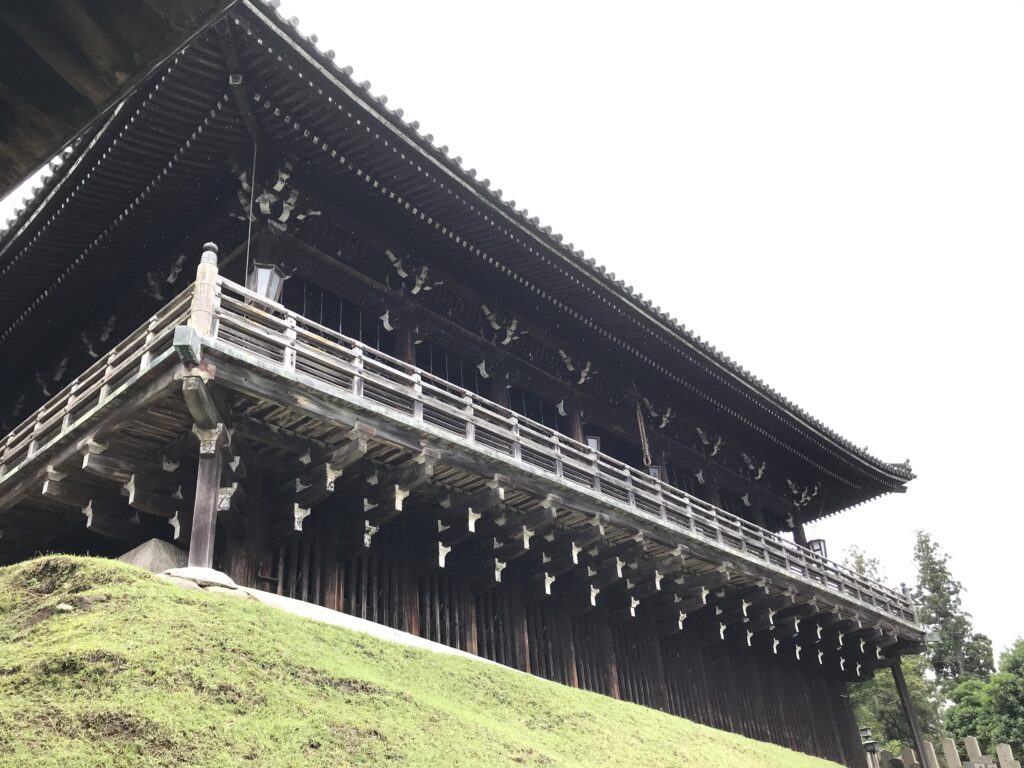
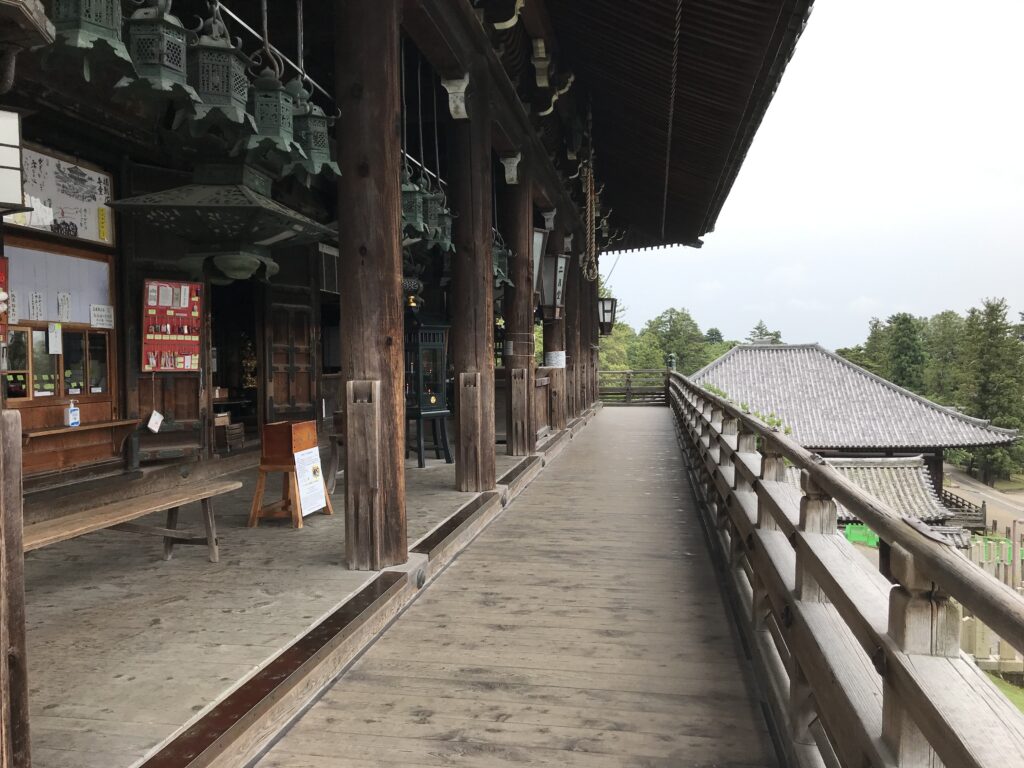
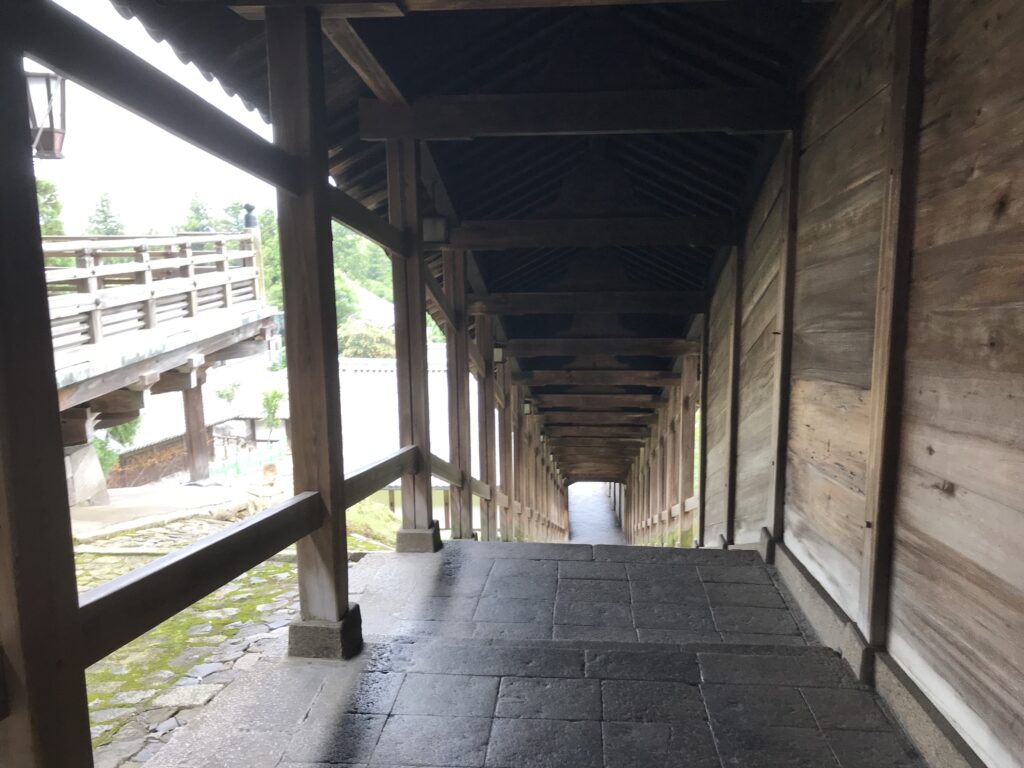
3日間鳴り響く鐘
二月堂から大仏殿に向かう途中、鐘楼があります。この鐘は日本最大級と言われています。鐘をついて鳴らすことはご法度ですが、真下に入って写真を撮ることは可能です。一回鳴らすと3日間鳴り響いたとの伝説がありますが、真実は如何に。おそらく、間近で聞いた人の耳に、耳鳴りが3日ほど続いたのかも知れません。鐘の音を一度は聞いてみたいです。
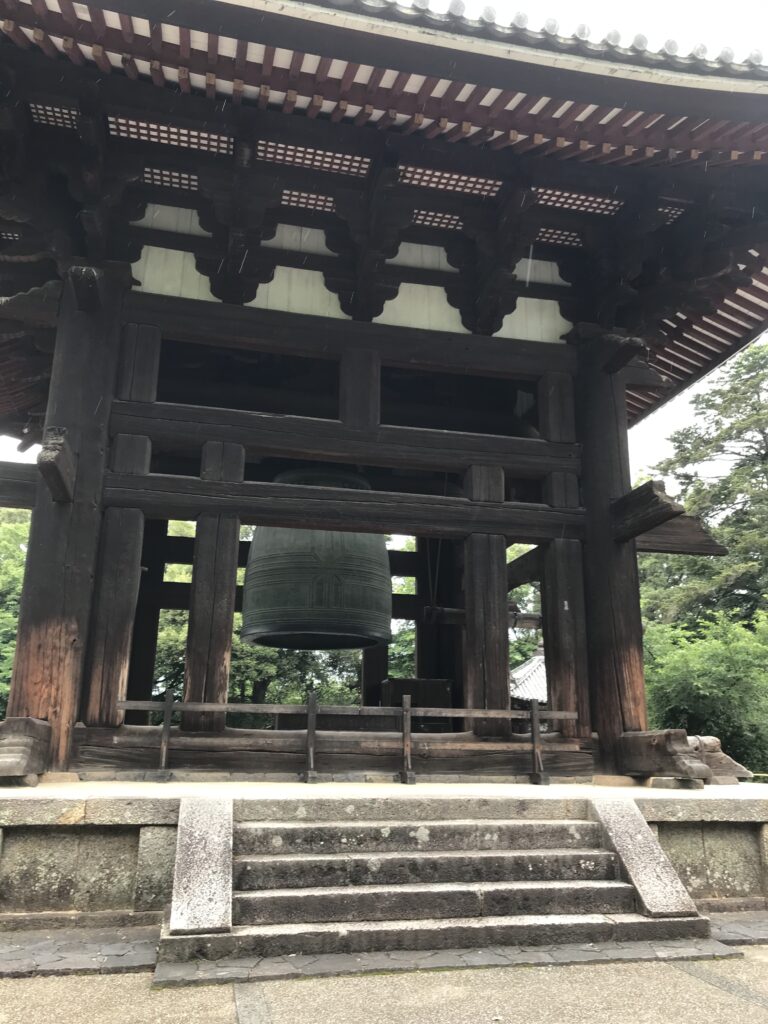
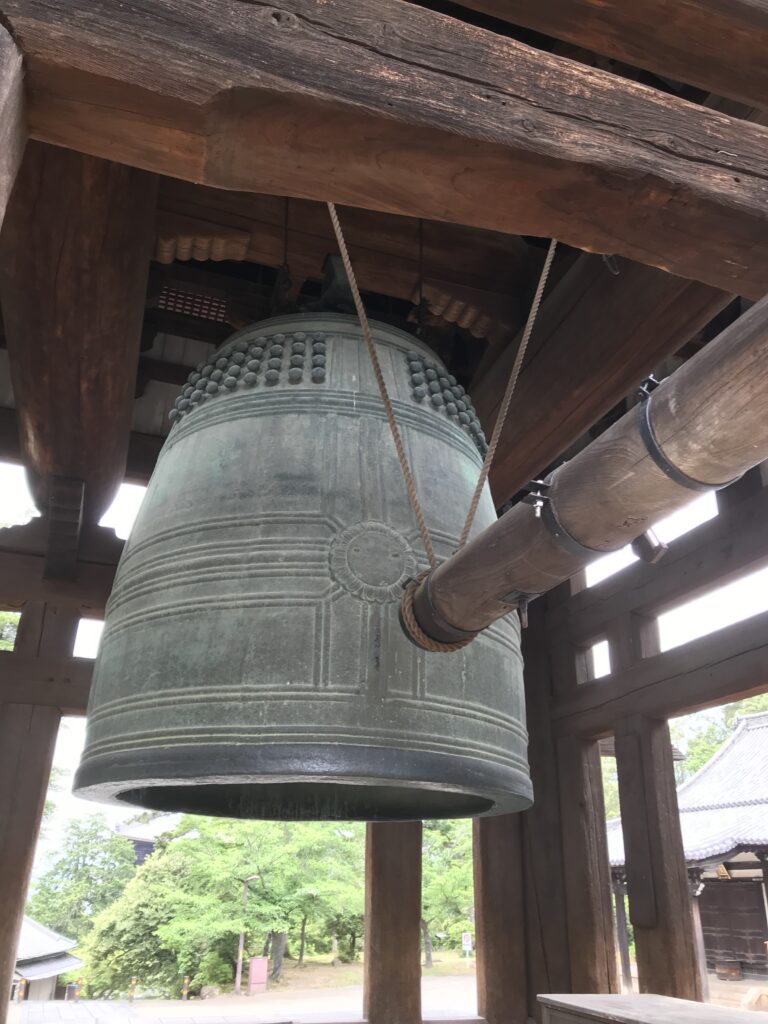
正倉院と転害門
そして、中には入れませんが、外観のみ観覧可能な正倉院があります。教科書で習った校倉造をご確認ください。最接近できるところまで行くと、その大きさに驚きます。お宝がざっくりと入っていると思うと、中に入れないのが残念です。
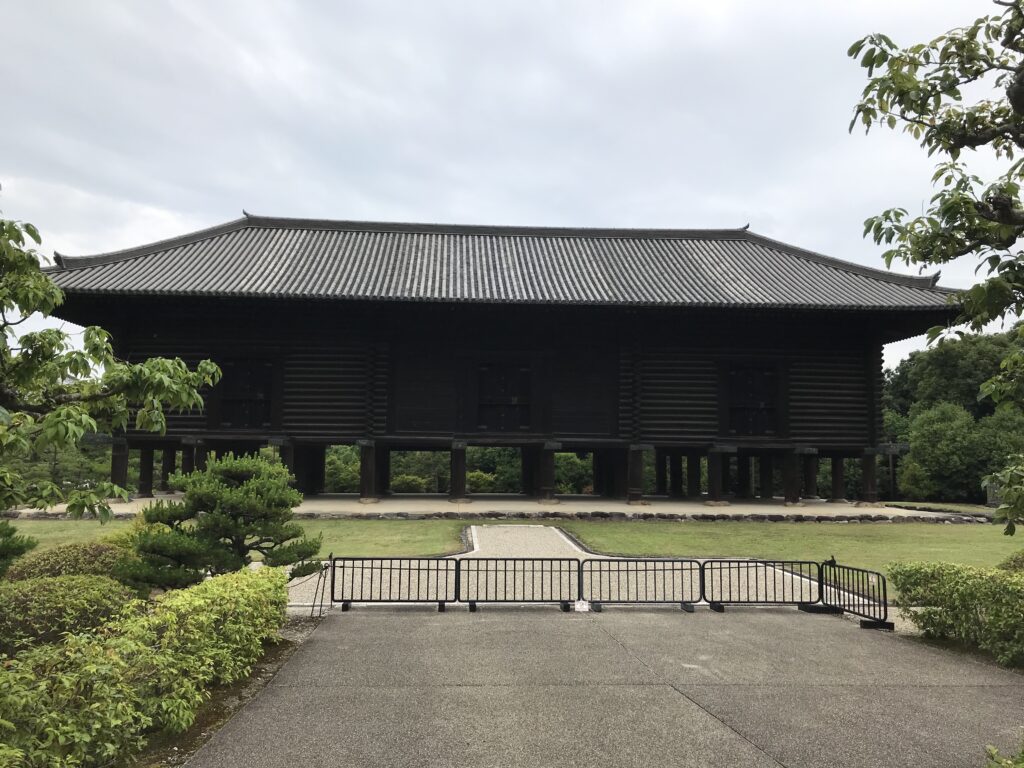
そして、創建当初から唯一残ると言われる、転害門。正倉院、転害門まで歩いて来ると、駐車場に戻るのが大変なので、なかなか来ませんが、奈良でゆっくりする機会のある方は、是非、実物を見ていただきたいと思います。
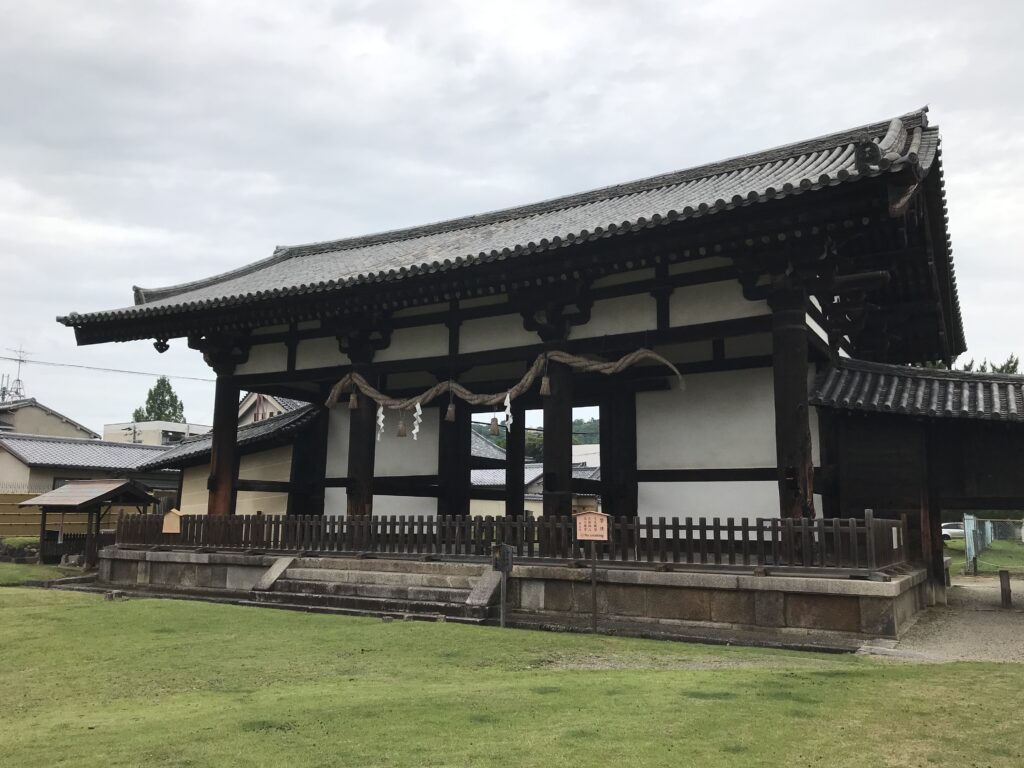
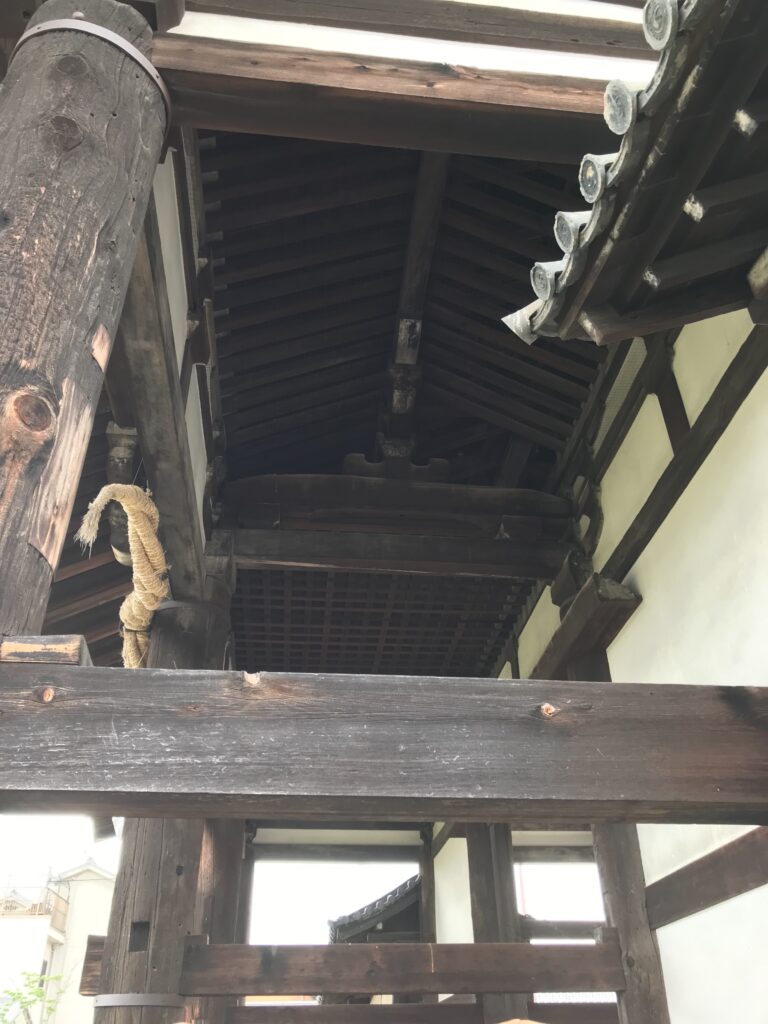
また、南大門に近い東大寺ミュージアムも必見です。ここに展示されている国宝の四天王像を見て、そのファッションに驚いたことがあります。それぞれの像の両肩の袖口のデザインが、猛獣の口になっています。学芸員さんに確認すると、獅子噛(ししがみ)と呼ばれるデザインだそうです。奈良時代の作品ですが、当時、こんなデザインの鎧を着ていた武将もいたのでしょう。古代人の想像力って凄いなと感動しました。(完)
東大寺の御朱印
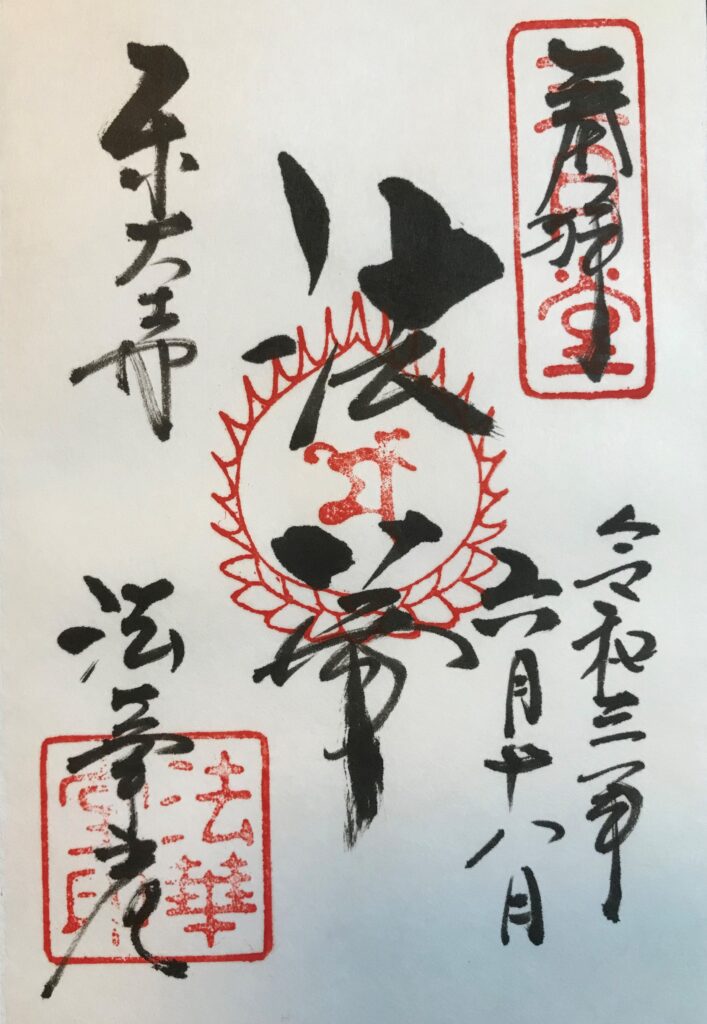
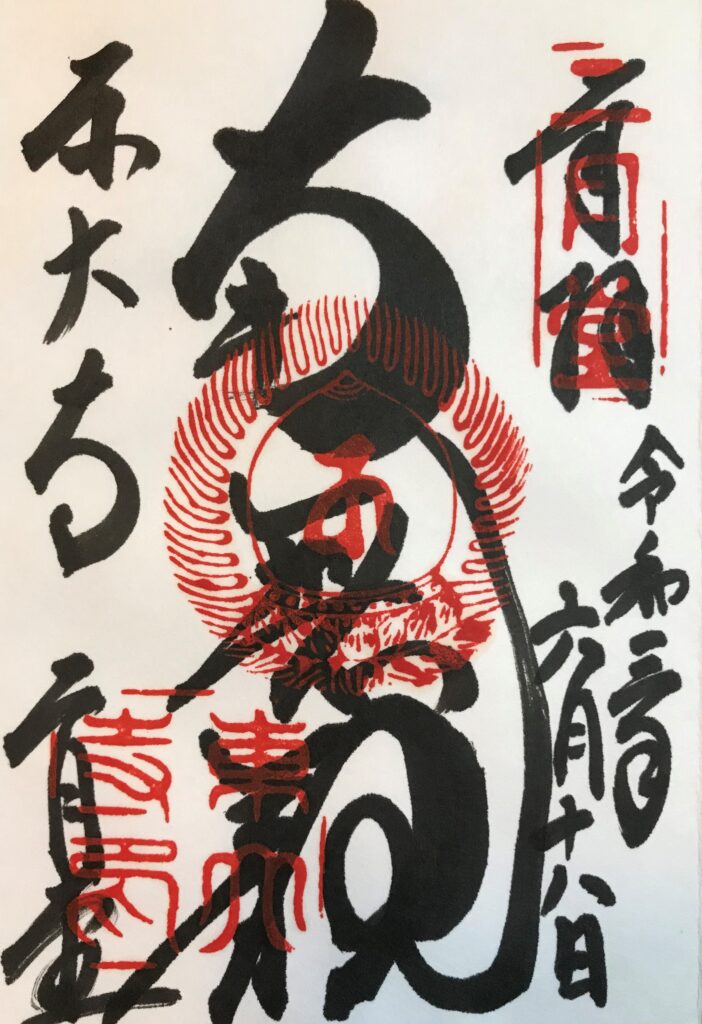
東大寺が紹介されている書籍
神仏霊場会の公式ガイドブックに東大寺が紹介されています。
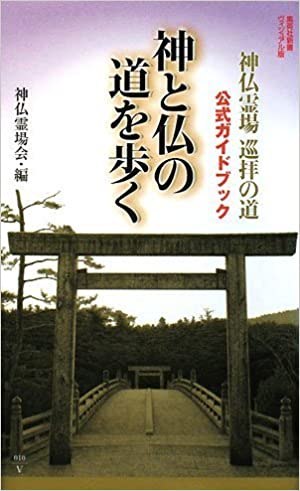
神と仏の道を歩く 神仏霊場巡拝の道公式ガイドブック (集英社新書ヴィジュアル版) [ 神仏霊場会 ]
価格:1,466円
(2021/5/6 09:24時点)
感想(5件)
Todaiji Temple ⑥Hokke-do Hall, Nigatsu-do Hall (February Hall), others (English)
It would be a shame if you came to Todaiji Temple and only saw the Great Buddha. Of course, most people have already seen the statues of Niohs at Nandaimon Gate, but there are many things that you should go one step further into the temple to see. I myself usually only show the guests the Daibutsuden because I don’t have enough time.
Hokke-do Hall and Nigatsu-do Hall
The first one is Hokke-do Hall. It is also called Sangatsu-do Hall (March Hall). Centered on the Kannon (Amoghapasa), in the hall there are dry lacquer and plastic statues from the Nara period. The statues are so large that they look very powerful when lined up in a row, and the Vajrapani statues and the Shitenno (Four Heavenly Kings) glaring at me made me feel the pressure. Photography is not allowed, so please visit the temple and feel the power of the statues in person.
Standing alongside the Hokke-do Hall is the Nigatsu-do Hall. This is the hall where the so-called “torchlight” runs during the Shune Festival. Although you don’t usually go up there, you should pass by the place where the torch runs at least once. From there, you can enjoy a panoramic view of the city of Nara, which makes everyone happy when you take people from overseas.
Bells to ring for three days
On the way from Nigatsudo to Daibutsuden, there is a bell tower. This bell is said to be one of the largest in Japan. It is not allowed to ring the bell, but you can go underneath it and take pictures. Legend has it that once rung, the bell would ring for three days, but what is the truth? Perhaps the ringing in the ears of those who heard it up close lasted for three days. I would like to hear the sound of the bell at least once.
Shosoin (Imperial Treasury House) and Tegaimon Gate
And then there is Shosoin, which is not open to the public, but you can see it only from the outside. Please check out the Azekura-Zukuri (Architectural Stracture) that you learned about in your textbooks of Japanese history. When you get close enough, you will be amazed at its size.It’s a pity that you can’t go inside, because I’m sure there are many treasures inside.
Then, there is the Tegaimon Gate, which is said to be the only one remaining from the original construction. If you walk to Shosoin and Tegaimon Gate, it is not easy to come back to the parking lot, but if you have a chance to spend some time in Nara, I highly recommend you to see those.
Another must-see is the Todaiji Museum near the Nandaimon Gate. When I saw the National Treasure statues of the Four Heavenly Kings on display there, I was surprised by their fashion. The cuffs on both shoulders of each statue were designed to look like the mouths of fierce animals. When I checked with the curator, she told me that the design was called “shishigami (Lion’s bite). It was made in the Nara period (710-794), but there must have been warlords who wore armor with this design back then. I was impressed by the imagination of the ancients. (End)
Temple Todaiji ⑥Hokke-do Hall, Nigatsu-do Hall (February Hall), autres (Français)
Il serait dommage que vous veniez au temple Todaiji et que vous ne voyiez que le Grand Bouddha. Bien sûr, la plupart des gens ont déjà vu les statues de Niohs à la porte Nandaimon, mais il y a beaucoup de choses que vous devriez aller voir un peu plus loin dans le temple. Moi-même, je ne montre généralement aux invités que le Daibutsuden, car je n’ai pas assez de temps.
Hokke-do Hall et Nigatsu-do Hall
Le premier est le Hokke-do Hall. Il est également appelé Sangatsu-do Hall (March Hall). Centré sur la Kannon (Amoghapasa), ce hall contient des statues en laque sèche et en plastique de la période Nara. Les statues sont si grandes qu’elles ont l’air très puissantes lorsqu’elles sont alignées, et les statues de Vajrapani et les Shitenno (quatre rois célestes) qui me regardaient fixement m’ont fait sentir la pression. Les photos ne sont pas autorisées, alors n’hésitez pas à visiter le temple et à ressentir la puissance des statues en personne.
À côté de la salle Hokke-do se trouve la salle Nigatsu-do. C’est dans cette salle que se déroule la course aux flambeaux pendant le festival Shune. Bien que vous n’ayez pas l’habitude de monter là-haut, vous devriez passer au moins une fois par l’endroit où passe la torche. De là, vous pouvez profiter d’une vue panoramique sur la ville de Nara, ce qui fait le bonheur de tous lorsque vous emmenez des personnes de l’étranger.
Les cloches sonneront pendant trois jours
Sur le chemin de Nigatsudo à Daibutsuden, il y a un clocher. Cette cloche est réputée être l’une des plus grandes du Japon. Il n’est pas permis de sonner la cloche, mais vous pouvez passer en dessous et prendre des photos. La légende dit qu’une fois sonnée, la cloche sonnerait pendant trois jours, mais quelle est la vérité ? Peut-être que le tintement dans les oreilles de ceux qui l’ont entendu de près a duré trois jours. J’aimerais entendre le son de la cloche au moins une fois.
Shosoin (Maison du Trésor impérial) et porte Tegaimon
Et puis il y a Shosoin, qui n’est pas ouvert au public, mais que vous pouvez voir uniquement de l’extérieur. Allez voir l’Azekura-Zukuri (structure architecturale) dont vous avez entendu parler dans vos manuels d’histoire du Japon. C’est dommage que vous ne puissiez pas entrer à l’intérieur, car je suis sûr qu’il y a de nombreux trésors à l’intérieur.
Ensuite, il y a la porte Tegaimon, dont on dit qu’elle est la seule qui reste de la construction originale. Si vous vous rendez à Shosoin et à la porte Tegaimon, il n’est pas facile de revenir au parking, mais si vous avez l’occasion de passer du temps à Nara, je vous recommande vivement de les voir.
Un autre incontournable est le musée Todaiji, près de la porte Nandaimon. Lorsque j’ai vu les statues du trésor national des quatre rois célestes qui y sont exposées, j’ai été surpris par leur mode. Les poignets des deux épaules de chaque statue étaient conçus pour ressembler à la gueule d’animaux féroces. Lorsque j’ai vérifié auprès de la conservatrice, elle m’a dit que ce motif était appelé “shishigami” (morsure de lion). Elle a été fabriquée pendant la période Nara (710-794), mais certains seigneurs de la guerre ont dû porter des armures avec ce motif à l’époque. J’ai été impressionné par l’imagination des anciens. (Fin)
